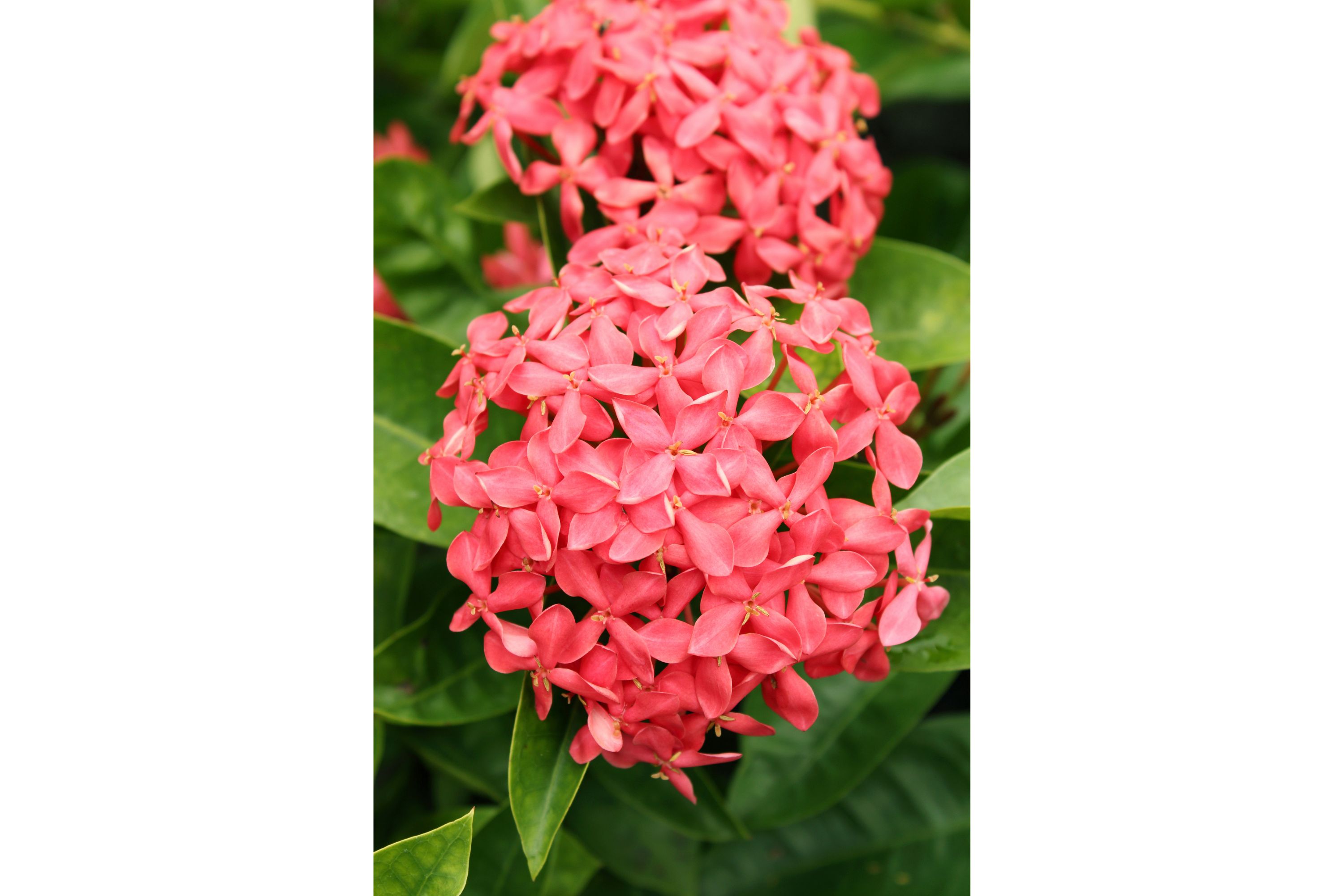Jungle geranium
(Ixora coccinea)

Description
Ixora coccinea is a popular ornamental plant that belongs to the Rubiaceae family. This tropical shrub is native to Asia and is widely cultivated in tropical and subtropical regions worldwide for its beautiful and showy flowers. This article will provide you with all the information you need to know about Ixora coccinea, including its history, characteristics, cultivation, and uses. Taxonomy and Nomenclature: Ixora coccinea is a species of flowering plants in the Rubiaceae family, which contains over 13,000 species. The genus Ixora comprises about 500 species, mostly found in tropical regions, including Africa, Asia, and the Pacific Islands. Ixora coccinea was first described by Carl Linnaeus, a Swedish botanist, in his book, Species Plantarum, published in 1753. The name Ixora is derived from the Malayalam word, Iksuvaram, meaning "sugarcane," while coccinea refers to the plant's bright red color. Description: Ixora coccinea is a dense, bushy shrub that can grow up to 4 meters in height, but most cultivated varieties are much smaller, usually 1 to 2 meters tall. It has opposite, glossy, dark green leaves that are oblong or elliptical in shape, measuring up to 10 centimeters in length. The plant produces dense, terminal clusters of small, tubular flowers that are 2 to 5 centimeters in diameter, with four petals that form a tube-like structure. The flowers come in a wide range of colors, including red, orange, yellow, pink, and white, and are highly attractive to pollinators, especially butterflies and hummingbirds. The plant's fruits are small, round, and black, containing one or two seeds. Cultivation: Ixora coccinea is a tropical shrub that thrives in warm and humid climates. It prefers well-drained soils that are rich in organic matter and slightly acidic, with a pH range of 5.5 to 6.5. The plant is relatively easy to cultivate and can be grown both in pots and in the ground. It requires full sun to partial shade and regular watering, especially during dry spells. The plant is sensitive to cold temperatures and frost, and it is advisable to protect it during winter months in cooler climates. Propagation: Ixora coccinea can be propagated through several methods, including seeds, cuttings, and layering. The easiest method is by taking stem cuttings from mature plants, preferably during the spring or summer months. Cuttings should be about 10 to 15 centimeters long and taken from the plant's softwood section. The cuttings should be dipped in rooting hormone and placed in a pot filled with a well-drained soil mixture, kept moist but not overly wet. The new plant should begin to root within a few weeks, and it can be transplanted to its permanent location after several months. Uses: Ixora coccinea is widely grown as an ornamental plant for its attractive flowers, which are used for landscaping, hedging, and in container gardens. The plant is also used in traditional medicine for various ailments, including fever, inflammation, and dysentery. The plant's leaves and bark are believed to have antifungal, antibacterial, and anti-inflammatory properties, and are used to make herbal remedies. In some parts of Asia, the plant is also used as a dye, yielding a bright red color. Conclusion: Ixora coccinea is a beautiful and versatile plant that can add color and vibrancy to any garden or landscape. It is easy to cultivate and propagate, making it a popular choice for gardeners and landscapers.
Taxonomic tree:







